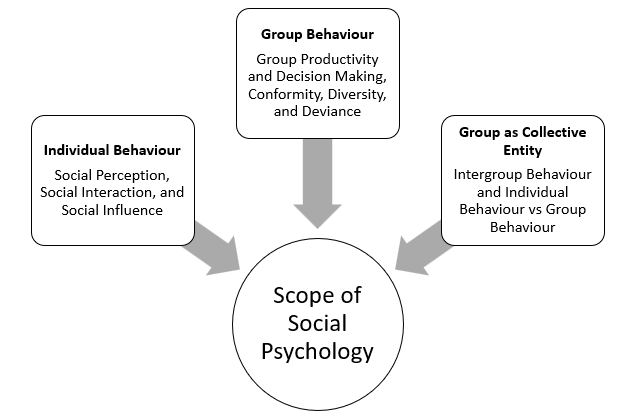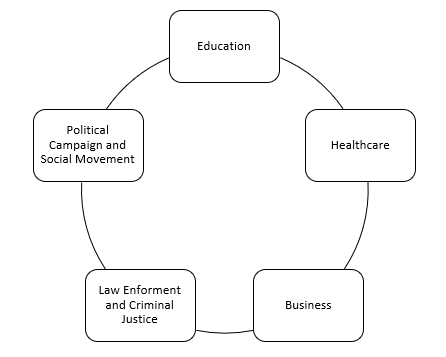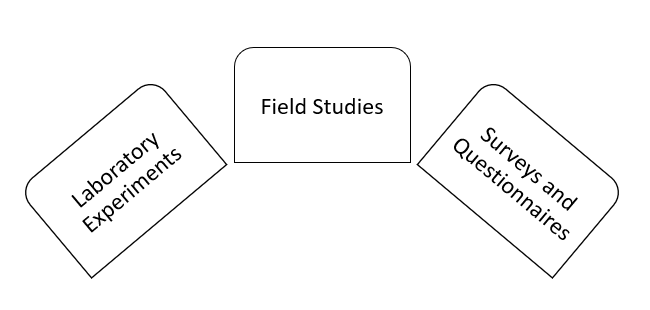Definition of Social Psychology
Social psychology is the scientific study of how individuals think, feel, and behave in social contexts. It investigates the influence of actual, imagined, or implied presence of others on human behaviour.
Gordon W. Allport (1968) defines social psychology as “a discipline that attempts to understand and explain how the thought, feeling, and behaviour of an individual are influenced by the actual, imagined, or implied presence of others.” This definition emphasizes the pervasive role that social context, both real and perceived, play in shaping human behaviour.
Baron, Byrne, and Suls (1989) further refine this by describing social psychology as “the scientific field that seeks to understand the nature and causes of individual behaviour in social situations.” This definition captures the essence of social psychology as a discipline that examines both internal psychological processes and the external social forces that influence human actions.
By exploring the interactions between individuals and their social environments, social psychology helps us understand how behaviours are moulded by the social world.
Scope of Social Psychology

Scope of Social Psychology
Social psychology’s scope is vast, covering numerous topics and concepts that investigate the interaction between individuals, groups, and social systems. The discipline can be broadly categorized into three major areas of inquiry-
1. Influence of Social Presence on Individuals
One of the fundamental tenets of social psychology is the understanding of how the presence of others influences individual behaviour. Whether this presence is actual, imagined, or implied, it exerts a significant impact on how individuals think, feel, and act.
Social Perception
Social perception is the process by which individuals form impressions of and make judgments about others. According to Fiske and Taylor (2013), social perception involves how individuals interpret and infer information about others, shaping their interactions and relationships. This concept is critical in understanding phenomena like stereotyping, prejudice, and interpersonal attraction.
Social Interaction
Social interaction involves the exchange between individuals in various social settings, ranging from friendships to workplace dynamics. Research by Mead (1934) highlights the role of symbolic interactionism, suggesting that social interaction is constructed through shared meanings and symbols, such as language and gestures.
Key Questions in Social Interaction are-
- How do small group dynamics influence individual cognition and emotions?
- How do social groups shape behaviours and attitudes of individual members?
- What role do cultural norms play in shaping individual behaviour?
Social Influence
Social influence is another critical area, focusing on how individuals are affected by others through persuasion, conformity, obedience, and power dynamics. A foundational study by Asch (1951) explored how people conform to group pressures even when the group is clearly wrong. Milgram’s (1963) work on obedience similarly showed how authority figures could compel individuals to perform actions against their moral judgment.
Key Questions in Social Influence are-
- What psychological mechanisms underpin conformity and obedience?
- How does social persuasion change individual attitudes and behaviour?
Influence of Individuals on Group Behaviour
Social psychology also examines how individual actions and perceptions shape group dynamics and outcomes. This area is particularly relevant in workplaces, political systems, and social movements, where the behaviour of key individuals can influence entire groups.
Group Productivity and Decision-Making
Research in this area examines how individuals contribute to group performance. Social loafing, a phenomenon identified by Latané, Williams, and Harkins (1979), highlights how individuals may exert less effort when working in a group compared to when they are alone. Conversely, the concept of social facilitation posited by Zajonc (1965) suggests that individual performance can improve in the presence of others.
Group decision-making is another key topic, with studies like Janis’s (1972) work on groupthink revealing how groups sometimes make poor decisions due to pressures to conform and avoid conflict.
Key Questions in Group Behaviour Include-
- How do individual biases impact collective decision-making?
- Why do some individuals conform to group norms, while others deviate?
Conformity, Diversity, and Deviance
Social psychologists also investigate the causes and consequences of conformity and deviance within groups. Conformity refers to the tendency of individuals to align their behaviours with group expectations, as shown in Asch’s (1951) conformity experiments. On the other hand, deviance refers to actions that go against group norms. Studies show that deviant behaviour can either harm or benefit group functioning, depending on the context (Hornsey, Jetten, & McAuliffe, 2006).
Key Questions in Conformity Include-
- What drives individuals to conform or deviate in group settings?
- How does group diversity affect conformity and deviance?
- Understanding Groups as Collective Entities
Social psychology also seeks to understand how groups function as entities. Group identity and intergroup relations are central to this area of research, with social psychologists examining how groups interact, form alliances, and sometimes engage in conflict.
Intergroup Relations
The study of intergroup relations focuses on interactions between different groups, including the causes and consequences of prejudice, discrimination, and conflict. Tajfel’s (1981) Social Identity Theory explains how individuals derive part of their identity from the groups they belong to, leading to in-group favouritism and out-group hostility.
Sherif’s (1954) Robbers Cave Experiment demonstrated how intergroup conflict could emerge when groups compete for limited resources. This research has profound implications for understanding racial, ethnic, and political divisions in society.
Key Questions in Intergroup Relations-
- What causes hostility between groups, and how can it be mitigated?
- How do group identities shape behaviour in intergroup settings?
Group Behaviour vs. Individual Behaviour
Groups can behave differently than the individuals within them. Deindividuation, a concept developed by Zimbardo (1969), refers to the loss of self-awareness and accountability that can occur in group settings, often leading to impulsive and sometimes violent behaviours, as seen in mob psychology.
Key Questions in Group Behaviour Include-
- How does group behaviour differ from individual behaviour?
- What factors contribute to deindividuation and group violence?
Practical Applications of Social Psychology

Practical Application of Social Psychology
Social psychology’s insights into human behaviour have a wide range of applications, including in education, healthcare, business, and law enforcement.
- Education– In the classroom, social psychology is used to enhance learning outcomes by understanding the role of peer influence and teacher expectations. Rosenthal and Jacobson’s (1968) Pygmalion Effect showed how teacher expectations could influence student performance, creating a self-fulfilling prophecy. Additionally, social psychologists explore how group work and collaborative learning foster deeper engagement and critical thinking (Johnson, Johnson, & Smith, 1998).
- Healthcare- In healthcare, social psychology contributes to improving patient outcomes through health behaviour change. Health campaigns often use principles of persuasion and social influence to promote behaviours like vaccination or healthy eating (Noar, 2006).
- Business– Social psychology helps businesses enhance workplace productivity and leadership strategies. Research on leadership styles and organizational behaviour offers insights into how employee motivation and team cohesion can be improved (Bass, 1990). Social psychologists also study consumer behaviour, helping marketers develop more effective advertising campaigns by understanding the role of social proof and authority in shaping consumer choices (Cialdini, 2009).
- Law Enforcement and Criminal Justice– Understanding the psychology of obedience, authority, and social norms is crucial in law enforcement. Social psychology offers insights into how police-community relations can be improved by fostering trust and cooperation (Tyler, 2006).
- Political Campaigns and Social Movements– Social psychological principles are integral to the success of political campaigns and social movements. Leaders often use persuasion and social identity to build a sense of unity and purpose among their followers. For instance, studies show that emotional appeals and group cohesion are key to mobilizing political action (Mackie, Devos, & Smith, 2000).
Research Methods in Social Psychology
Social psychology relies on a variety of research methods, including experiments, surveys, observational studies, and longitudinal research, to explore the intricate ways individuals interact with their social environments.
- Laboratory Experiments– One of the most prominent research methods in social psychology is the laboratory experiment. Famous studies, such as Milgram’s (1963) experiments on obedience to authority, demonstrate the power of controlled experiments to reveal profound insights into human behaviour. Zimbardo’s (1971) Stanford Prison Experiment is another example, illustrating the impact of situational factors on behaviour.
- Field Studies– Field studies allow social psychologists to observe behaviour in natural environments. These studies offer valuable insights into how social behaviour unfolds in real-world contexts, such as how people behave in public spaces or during social interactions.
- Surveys and Questionnaires– Surveys and questionnaires are commonly used to collect data from large populations, making them useful for assessing attitudes, beliefs, and self-reported behaviours. These tools are critical for understanding how individuals perceive social situations and their roles within them (Dillman, Smyth, & Christian, 2014)

Research Methods in Social Psychology
Ethical Issues in Research Methods in Social Psychology
Ethical considerations are critical in social psychology research, as studies often involve human participants and can impact their well-being. Ethical guidelines help ensure respect, fairness, and safety in the research process. Below are the key ethical issues in social psychology research, supported by examples and references.
1. Informed Consent
Participants must be fully informed about the purpose, procedures, risks, and benefits of the research before agreeing to participate.
for example –Milgram Obedience Study (1963), participants were deceived about the study’s true purpose (testing obedience, not learning). Although Milgram debriefed participants later, critics argued they had not provided fully informed consent.
Ethical Solution:
- Researchers should clearly explain the study’s purpose, potential risks, and rights to withdraw.
- Use informed consent forms detailing all relevant information.
APA Guideline: Researchers must provide “an accurate understanding of the research” and obtain informed consent unless specific exceptions apply (APA, 2017, Standard 8.02).
2. Deception
Deception occurs when researchers intentionally mislead participants about the nature of the study.
Example: the Asch Conformity Experiments (1951), participants were unaware that other group members were confederates intentionally giving incorrect answers to test conformity.
Ethical Concerns:
- Deception can lead to stress or mistrust if participants feel manipulated.
- Violates participants’ right to make an informed decision.
Ethical Solution: Deception should only be used when it is scientifically justified and alternatives are unavailable. Participants must be fully debriefed afterward.
APA Guideline: Deception is acceptable only when it is essential for research and does not cause significant harm (APA, 2017, Standard 8.07).
3. Privacy and Confidentiality
Researchers must protect participants’ personal information and ensure their anonymity.
Example: In studies on sensitive topics like mental health or prejudice, sharing identifiable data without consent could harm participants’ reputation or mental health.
Ethical Solution:
- Use anonymized data and store personal information securely.
- Inform participants about how their data will be used and protected.
APA Guideline: Researchers must “protect confidential information concerning research participants” (APA, 2017, Standard 4.01).
4. Psychological Harm
Research should not cause undue stress, discomfort, or psychological harm to participants.
Example: Zimbardo’s Stanford Prison Experiment (1971), participants experienced emotional and psychological distress due to their roles as guards or prisoners.
Ethical Concerns: Participants were not adequately protected from harm, and the study was terminated early.
Ethical Solution:
- Researchers should conduct a risk-benefit analysis and have procedures in place to minimize harm.
- Monitoring participants’ well-being during the study is essential.
APA Guideline: Researchers must avoid studies that cause harm unless the potential benefits outweigh the risks (APA, 2017, Standard 3.04).
5. Voluntary Participation
Participation in research must be entirely voluntary, and participants should be free to withdraw at any time.
Example: If participants feel coerced due to power dynamics, such as a professor conducting research with their students, this violates voluntariness.
Ethical Solution: Ensure there is no undue pressure or coercion, explicitly stating the voluntary nature of participation.
APA Guideline: Researchers must avoid undue influence or coercion (APA, 2017, Standard 8.04).
6. Debriefing
Participants must be provided with a full explanation of the study after their participation, especially if deception was used.
Example: In Milgram’s study, debriefing was essential to clarify that the shocks were fake and reduce potential emotional harm.
Ethical Solution: Provide debriefing sessions immediately after the study to explain its purpose, correct misconceptions, and address participants’ concerns.
APA Guideline: Researchers must “provide a prompt opportunity for participants to obtain information about the nature, results, and conclusions of the research” (APA, 2017, Standard 8.08).
7. Use of Vulnerable Populations
Special care is required when conducting research with vulnerable groups, such as children, the elderly, or individuals with disabilities.
Example: Research on children’s social development must ensure parental consent and adapt procedures to suit the child’s comprehension level.
Ethical Solution:
- Obtain informed consent from guardians and assent from participants.
- Design studies to minimize risks and respect participants’ autonomy.
APA Guideline: Researchers must provide “additional safeguards for vulnerable populations” (APA, 2017, Standard 3.10).
Conclusion
Ethical issues in social psychology research emphasize the importance of protecting participants’ rights, safety, and dignity. Adhering to ethical principles not only ensures the well-being of participants but also enhances the credibility and reliability of research findings.
Conclusion
Social psychology is an essential field that sheds light on the complex interplay between individuals and their social environments. By examining concepts such as social influence, group dynamics, and intergroup relations, social psychology helps us understand how human behaviour is shaped by the social world. Through research methods like experiments, surveys, and field studies, social psychologists have developed theories and frameworks that are applicable to a wide range of real-world settings, from education and healthcare to business and law enforcement. With its profound insights into human behaviour, social psychology continues to be a vital field of study that enhances our understanding of both individuals and society as a whole.

Major Domains in Social Psychology
References
Allport, G. W. (1968). The nature of prejudice. Addison-Wesley.
Asch, S. E. (1951). Effects of group pressure upon the modification and distortion of judgment. In H. Guetzkow (Ed.), Groups, leadership and men (pp. 177-190). Carnegie Press.
Baron, R. A., & Byrne, D. (1997). Social Psychology (8th ed.). Boston, MA: Allyn and Bacon.
Bass, B. M. (1990). Bass & Stogdill’s handbook of leadership: Theory, research, and managerial applications. Free Press.
Cialdini, R. B. (2009). Influence: Science and practice (5th ed.). Pearson.
Fiske, S. T., & Taylor, S. E. (2013). Social cognition: From brains to culture. Sage.
Janis, I. L. (1972). Victims of groupthink: A psychological study of foreign-policy decisions and fiascos. Houghton Mifflin.
Latané, B., Williams, K., & Harkins, S. (1979). Many hands make light the work: The causes and consequences of social loafing. Journal of Personality and Social Psychology, 37(6), 822-832.
Mackie, D. M., Devos, T., & Smith, E. R. (2000). Intergroup emotions: Explaining offensive action tendencies in an intergroup context. Journal of Personality and Social Psychology, 79(4), 602-616.
Mead, G. H. (1934). Mind, self, and society. University of Chicago Press.
Milgram, S. (1963). Behavioural study of obedience. Journal of Abnormal and Social Psychology, 67(4), 371-378.
Myers, D. G. (2010). Social Psychology (10th ed.). New York: McGraw-Hill.
Noar, S. M. (2006). A 10-year retrospective of research in health mass media campaigns: Where do we go from here? Journal of Health Communication, 11(1), 21-42.
Rosenthal, R., & Jacobson, L. (1968). Pygmalion in the classroom: Teacher expectation and pupils’ intellectual development. Holt, Rinehart & Winston.
Sherif, M. (1954). Superordinate goals in the reduction of intergroup conflict. American Journal of Sociology, 60(4), 349-356.
Tajfel, H. (1981). Human groups and social categories: Studies in social psychology. Cambridge University Press.
Tyler, T. R. (2006). Why people obey the law. Princeton University Press.
Zajonc, R. B. (1965). Social facilitation. Science, 149(3681), 269-274.
Zimbardo, P. G. (1969). The human choice: Individuation, reason, and order versus deindividuation, impulse, and chaos. Nebraska Symposium on Motivation, 17, 237-307.
Subscribe to Careershodh
Get the latest updates and insights.
Join 15,177 other subscribers!
Niwlikar, B. A. (2020, March 16). Scope of Social Psychology- Master 3 Insightful Areas of Inquiry. Careershodh. https://www.careershodh.com/scope-of-social-psychology/
